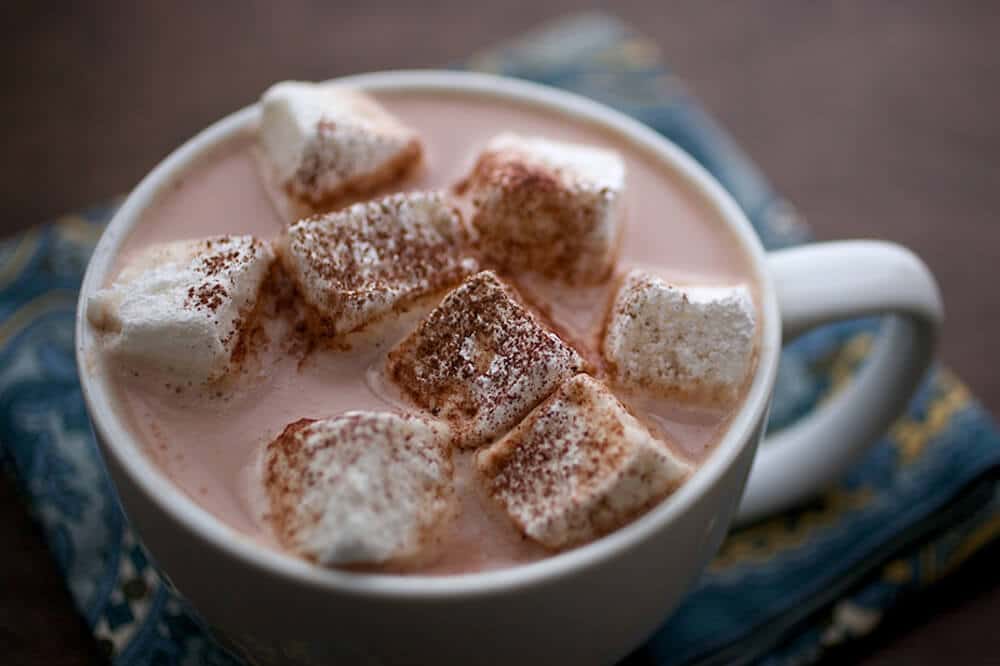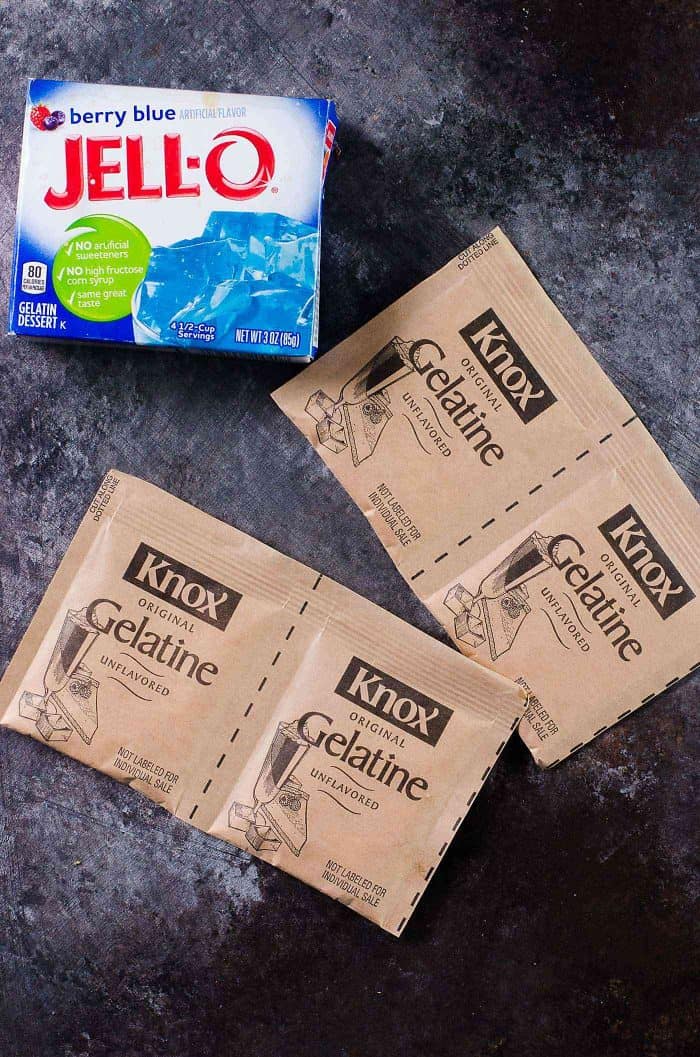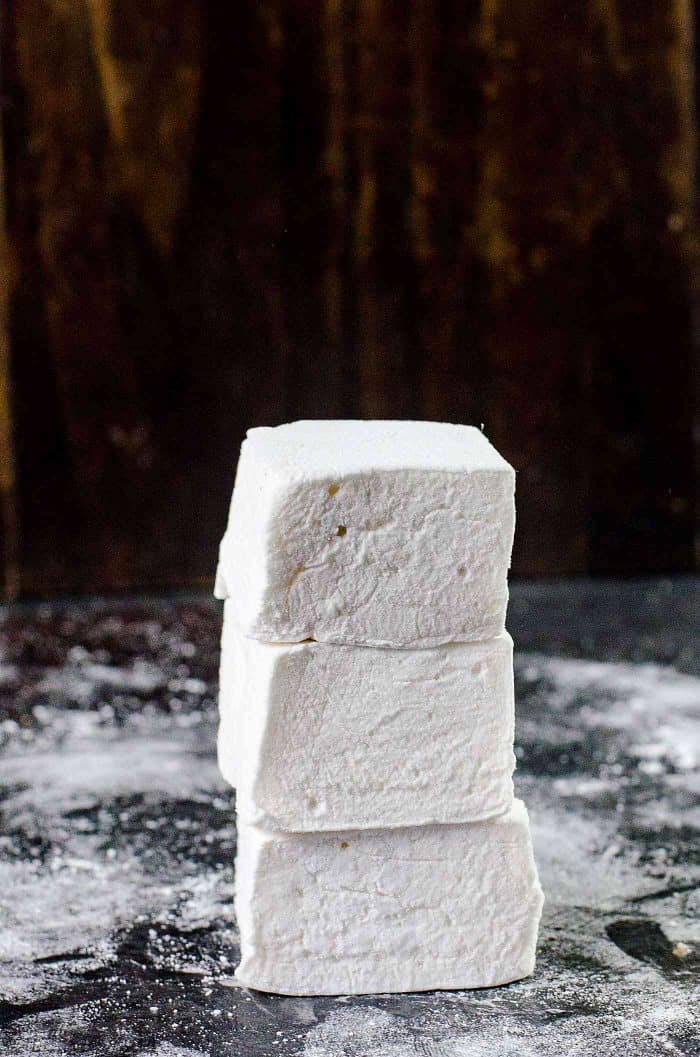Alright guys and gals, let’s talk marshmallows. Sweet, soft, springy, fluffy pillows of deliciousness – homemade marshmallows are easy and so much better than store-bought. This is a long post with plenty of tips on how to make marshmallows – with or without corn syrup, and with or without a sugar thermometer.
Corn syrup pulls double duty in a marshmallow. It doesn’t crystallize like sugar does, plus it actually reduces the amount of dissolved sugar that crystallizes.

Can I use gelatin or agar?
Gelatin is the setting agent for marshmallows. If you’re vegan or vegetarian, you can use a recipe that uses agar instead. But just be aware that the texture will change. The texture is very important for me with these homemade marshmallows and that’s why I prefer using regular gelatin.
One thing to note with gelatin is that it loses some of its setting properties at high temperatures. This is a problem when making marshmallows, because you’re basically adding very hot sugar (hotter than the boiling temperature of water) to gelatin here.
So once the sugar has heated to the right temperature, let it cool down ever so slightly (until the bubbles subside), and then add the sugar syrup along the wall of your mixer bowl, while whisking the gelatin. This cools down the sugar further, while still melting and mixing the gelatin uniformly.
I also prefer to WEIGH the gelatin, over using the packets. This is because I have noticed that gelatin packets can vary ever so slightly in weight, between brands and the size of the gelatin granules.

The only guide you need to make perfect marshmallows!

When it comes to marshmallows, I’ve been spoiled. I’ve enjoyed PERFECT homemade marshmallows since I was little, because my grandmother was an absolute pro at making them. She passed on the obsession to me, and I’ve been fluffing ’em up for as long as I can remember.
I’ve shared these butterscotch swirled marshmallows on the blog before, but decided it was time to make a detailed, troubleshooting post with all tips and tricks I’ve learned along the way, so that I can show you how easy it is to make the fluffiest, most divine marshmallows in the comfort of your home.
Homemade Marshmallows
FAQ
What substance in a marshmallow makes it stretchy?
What gives marshmallows their flavor?
What does cornstarch do in marshmallows?
Does the ratio of sugar to corn syrup determines the texture of the marshmallow?
What happens if you add corn syrup to marshmallows?
(As the syrup boils water evaporates, and the syrup becomes even more concentrated with sugar.) When making marshmallows, the syrup is cooked until an 85 percent concentration of sugar is in the syrup, and the corn syrup is added to help prevent crystals from forming in the cooled syrup.
Is sucralose made from corn syrup?
No. Sucralose is an artificial sweetener and sugar substitute. It is synthesized by the selective chlorination of sucrose in a multistep route that substitutes three specific hydroxyl groups with chlorine atoms.
Why do marshmallows taste better than corn syrup?
And the sweeteners determine the marshmallow’s texture: Sugar is sweeter than corn syrup, so it’s a necessary inclusion for flavor, but it also crystallizes and makes candy harder and more brittle. Corn syrup, on the other hand, does not crystallize, creating a more tender texture.
What makes a marshmallow gooey?
In marshmallows, the foam is made up of air suspended in the liquid sugar mixture. Gelatin is probably the most important part of a marshmallow, because it serves as the scaffolding that keeps all the sugar and flavor goodness in place and gives the marshmallow its stretchy, gooey texture.
